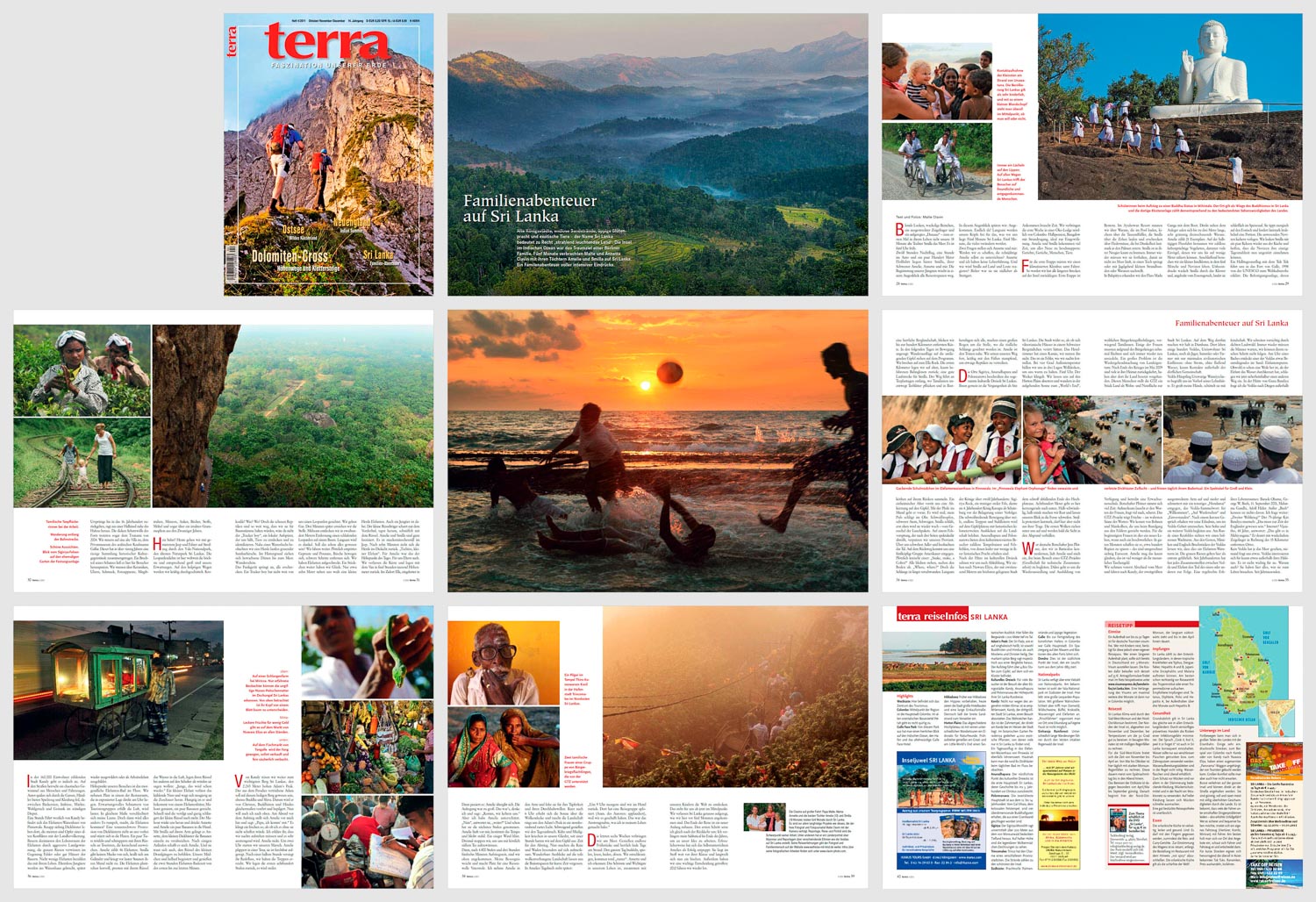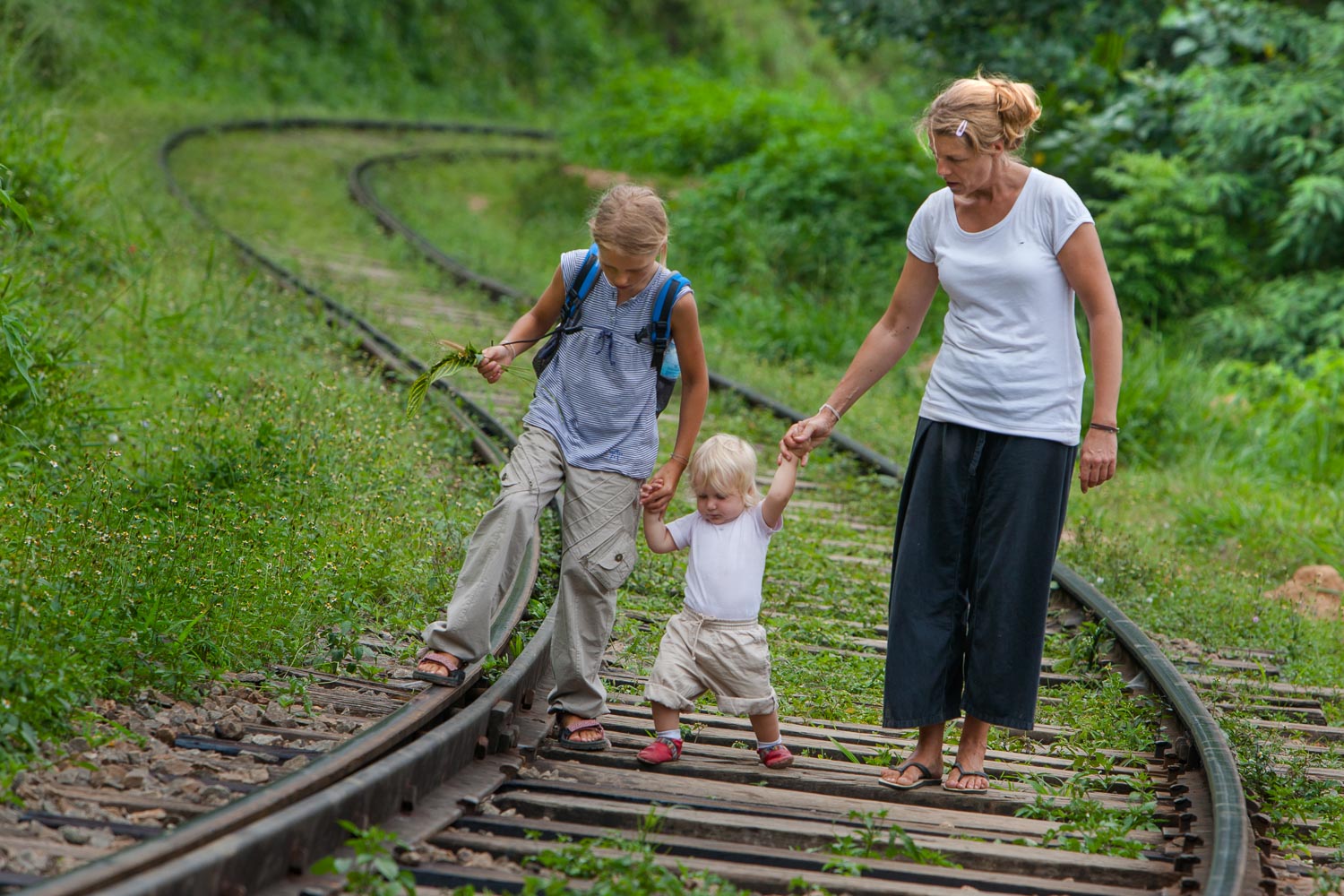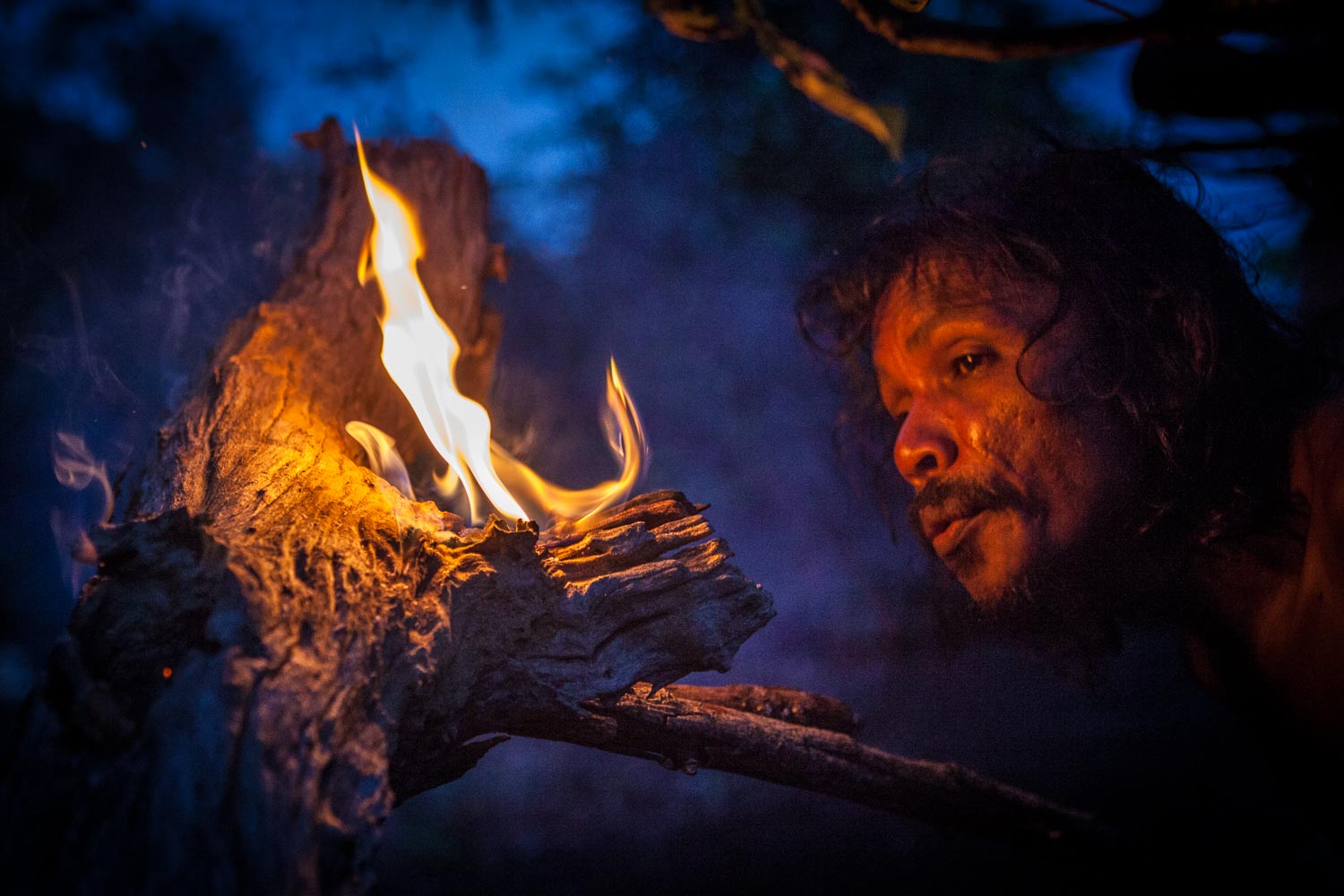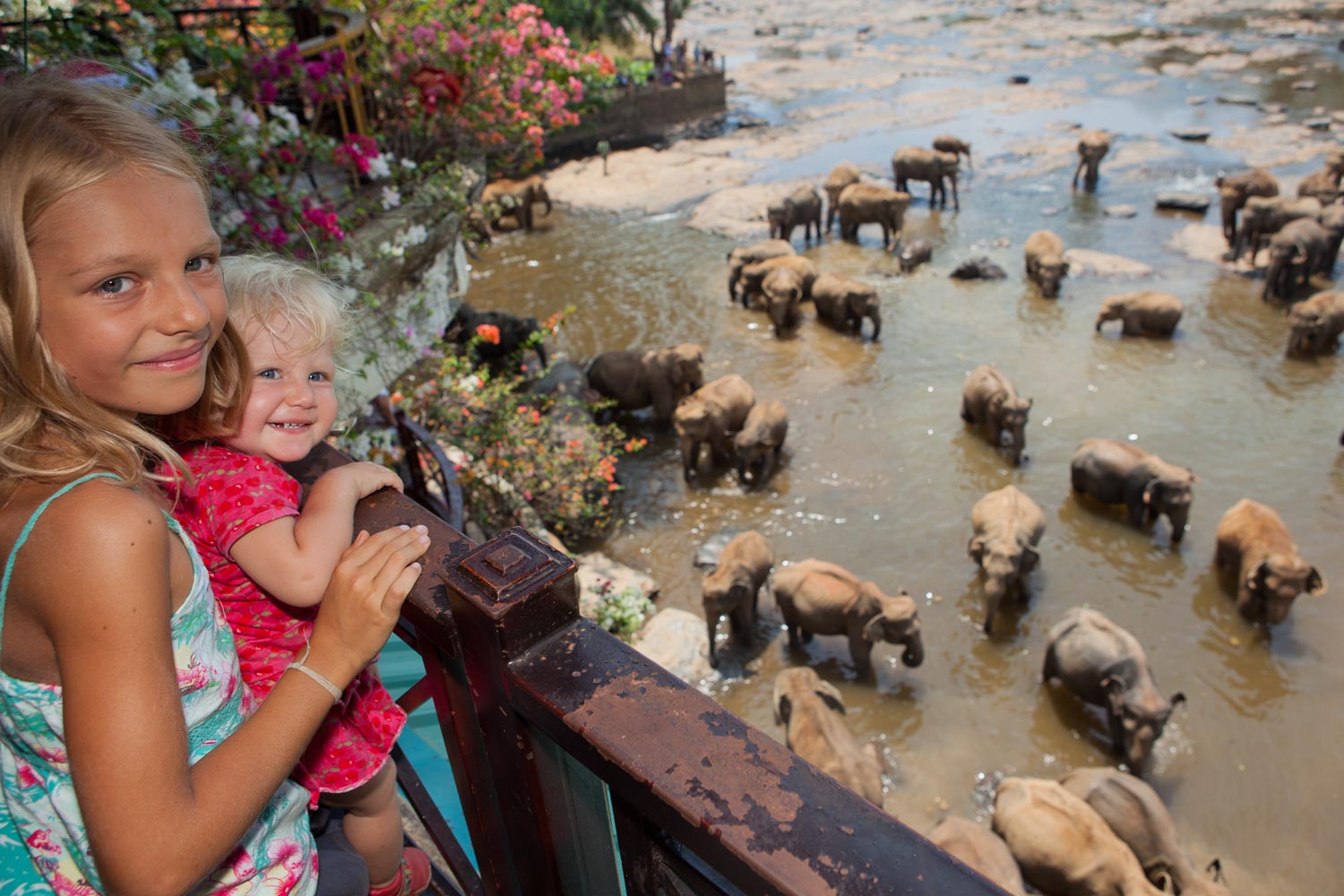Published in:

Germany’s biggest nature travel magazine
16 pages | text & photography
The first steps
Blonde curls, wobbly little legs and an excited “Daaaaaa”, with an outstretched forefinger pointing to an endless stretch of water – for the first time in her life, our 16-month-old daughter Smilla sees the sea. It’s five o’clock in the morning. A twelve hour night-time flight, a one hour drive and a few hundred metres on a raft lie behind Smilla, her sister Amelie, Annette and me. In the blink of an eye the enthusiasm of our youngest erases all travel related stress.
In that moment we feel: arrived. Finally there! Slowly our heads clear to what lies ahead: five months Sri Lanka. Five months that will make a difference.
Annette and I are asking ourselves: will we be able to teach ten-year-old Amelie ourselves? We have no teaching experience. And how will Smilla cope with the country and its people? Up until now she has never been south of Stuttgart.
Arriving takes time. We spend the first week in an eco-lodge north of Colombo. Half-board, bungalow with beach access, just perfect for settling in. Amelie and Smilla have plenty of time to get to know everything which is new: meals, smells, people, animals.
Finally in Travelling mode
For the first stage we rent an air-conditioned minibus with a driver. This is how we will cover most of our long-distance trips on the island. The first stop is Bentota.
At the Ayubowan Resort we marvel at monitor lizards bathing in the pool, giggle at the centipedes running over Smilla’s toes and are startled by bats clamouring loudly in the palm trees after dark. Smilla’s curiosity can hardly be stopped. Again and again we have to hold her back so that she doesn’t walk into the sea, jump into a pond or, with a hunting howl, chase small beach dogs or monitor lizards.
Smilla’s curiosity can hardly be stopped.
In Balapitiya we explore the river Madu Ganga by boat. Right next to the jetty, up to three-metre-long, grim-looking monitor lizards are basking in the sun. Amelie counts 21 of them. During the half-day river trip we marvel at countless colourful bird species, including many kingfishers, which we can approach to within a few metres.
Afterwards we visit a small island monastery where five monks and novices live. Unimpressed, Smilla totters through the monastery and, lured by the smell of food, finally ends up in the dining hall. Vigorously she bangs on the dining table and loudly jabbers her demand for a serving. The attendant novices chuckle awkwardly. With a few biscuits we coax Smilla out of the kitchen again and hope that the novices can have their only meal of the day without interruption now.
All down to Galle
A tuk-tuk takes us on a half-day excursion to Galle Fort, declared a World Heritage Site by UNESCO in 1998. The fortification, the origins of which date back to the 16th century, juts out from a peninsula near the harbour. The fort’s thick ramparts even withstood the 2004 tsunami.
We head for an old villa, the private museum of the Arab merchant Gaffar. In over forty years, he has amassed a huge collection of cultural objects of historical value. Only a fraction of his treasure is exhibited for visitors here. We marvel at all the ceramics, watches, jewellery, cameras, dowry chests, coins, anchors, books, fabrics, furniture and even an intact gramophone from the 1920s.
Yala
Heia Safari! Today we go on a foray through Sri Lanka’s oldest nature reserve by rented jeep and driver. The leopard density is supposed to be the highest in the world here and our expectations are correspondingly high. On the bumpy roads we keep bouncing around.
Crocodiles! What! Where? But the shy reptiles are so far away that we take them to be tree trunks. If it weren’t for the “tracker boy”, a local tracker who helps us spot and identify animals, we wouldn’t have noticed. Near a waterhole we observe a herd of silently grazing sambar deer. In the background, overgrown dunes stretch all the way to the sea. Beautiful. The radio crackles, startling everyone. A tracker boy has spotted a leopard not too far away. We step on it.
Three minutes later we reach the spot. With effort we can make out a sleeping leopard on a tree 200 metres away. Slowly it gets dark. Is that all there is to it? We continue on.
Suddenly outraged snarls and trombones, bushes move, heavy footsteps move away from us. We have scared off elephants. A little further on we are lucky: a small herd of elephants only about 10 metres away from us. There is also a cub. The little proboscidean paws with its fore hoof, gropes around, sniffs with its trunk. Amelie and Smilla are fascinated. It is dead silent in the jeep.
After ten minutes, the herd retreats into the thicket. “Bye, little elephant” For Amelie this was the highlight of the day. For us as parents too.
Off to the highlands
We leave the coast and travelling by van manage 1000 metres in altitude in five hours. At our destination, Ella, embedded in magnificent mountainous scenery, we can look as far as the coast a 100 kilometres away.
The next days exercise is the order of the day: hiking trips to the surrounding peaks are on the agenda. We set off for Ella Rock. The first kilometres we walk on old, hardly used railway tracks, a good running track for Smilla. The path then takes us along tea plantations, where Tamil women are incessantly picking tea leaves and collecting them in baskets on their backs.
A local elderly man mentions a shortcut to the summit. With a pipe in his mouth, he leads the way. It gets steep, my heartbeat throbs in my ears. Sweat dripping, heavy breathing, silence. Smilla is asleep. Only at the top does she wake up again – to the rustling as we start on the packed lunches. On a rocky outcrop that spectacularly drops away on three sides, we gobble up our eats. Above us eagles hover and monitor the valley. On the way back a group of five Americans comes down the path.
Suddenly one of them yells “Snake, snake, a cobra!” Everybody halts, scanning the terrain. “Where, where?” But by now the snake has disappeared. Eventually everybody calms down, gives the place where the deadly snake had been sighted a wide berth. Amelie is close to tears. We continue on our way, stamping our feet vigorously to drive away possible reptiles.
Ella: The first kilometres of our family hike up Ella Rock lead along a rarely used railway line. Even Smilla walks a few hundred metres, otherwise she is allowed to watch everything in the carrier on daddy’s back.
The cultural triangle
The places Sigiriya, Anuradhapura and Polonnaruwa delineate the so-called cultural triangle of Sri Lanka. What they have in common is their past as the seat of kings for as long as 12 centuries. Sigiriya Rock, a defiant steep rock, served King Kassapa in the 4th century as a protective fortress against the siege of his persecutors.
The sweaty climb up steep, endless stairs and steel ladders is rewarded with fantastic views of the landscape for miles on the summit plateau. Anuradhapura and Polonnaruwa offer the culturally interested visitor countless temple ruins and rock caves, of which unfortunately only a few have been preserved in their historical splendour.
The end of the world
After the heat of the cultural triangle, we feel like cooling down. We head for Nuwara Eliya, the highest town in Sri Lanka at 2000 metres altitude. The town looks like Victorian houses lost in a Swiss mountain village.
The hotel room has a fireplace, we don’t use it. That is a mistake, as we discover at night. At four degrees outside, to keep warm we wrap ourselves in three layers of woollen blankets. 5 o’clock. The alarm goes off. We are dropped off on the Horton Plains and as the sun is rising we walk towards “World’s End”, the steep drop at end of the plateau.
800 metres straight down. A bit dizzy and tired we take a break and let our eyes wander into the distance. Smilla vocally remonstrates but is not allowed out of her sling here. The first clouds are gathering down below and will soon obscure the view into the deep.
At four degrees outside, to keep warm we wrap ourselves in three layers of woollen blankets.
Project visit with the German ambassador
The German ambassador Jens Plötner, whom we get to know in Batticaloa, invites Amelie and me to accompany him on a visit to a GTZ (Gesellschaft für technische Zusammenarbeit) project. The project is about the resettlement and education of female civil war refugees, mainly Tamil women. Some of the women had to flee ten times due to the civil war and resettle again and again.
A major problem is the restoration of land ownership: after the end of the war in May 2009, many returned home only to discover that their land had been occupied. GTZ provides these people with a plot of land for farming and as a place to settle, and also runs a school for adults. Ambassador Plötner takes his time: he listens to the women thoughtfully, asks a lot of questions, jokes.
The GTZ project is bearing fruit – in the truest sense of the word: we sample the beans and corncobs that were presented to us touring the croplands. For the women who benefit, this is a new life, albeit an arduous one: in a good month, they manage to save about 100 rupees, the equivalent of 70 euro cents. Amelie finds it hard to believe, it is much less than her monthly pocket money.
Back to the Stone Age
We say goodbye to the sea for the time being and drive up to Kandy, the second largest city in Sri Lanka. On the way we stop in Dambana. There, several hundred Veddas, indigenous people of Sri Lanka, still live as hunter gatherers or farmers with only minimal influence of civilisation: No electricity, no running water, hardly any contact with people outside the village community.
For centuries, almost every encounter between a Vedda and elephant has resulted in the death of one or the other
Vedda chief Uruwarige Wanniya-laeto welcomes us in the front yard of his mud hut. He grabs my hands, shakes them up and down with an outstretched arm and belts out a tenorlike “Hondamai”, the Vedda collective word for “welcome”, “goodbye” and “agreed”. After a short conversation, we get his permission to look around the Vedda territory.
His son and another Vedda accompany us. At the edge of a rice field we see a wooden watchtower. From the gestures, facial expressions and fragments of English, the Veddas make us understand that this is an elephant warning tower. The grey giants are considered extremely dangerous here. For centuries, almost every encounter between a Vedda and elephant has resulted in the death of one or the other. A real hereditary enmity.
We cautiously traverse the dense deciduous forest. Again and again the men have to pause, we can’t keep up with their fast pace. On the bank of a stream, one of the Veddas discovers something unsettling in the sand: elephant tracks. Although it has already been a while since the elephant crossed the stream, just to be on the safe side we now take a different path.
In the hut of Guna Bandiya I ask the Veddas about things outside their habitat: Barak Obama, George W. Bush, 11 September 2001, Gandhi, Adolf Hitler. Apart from “Bush”, they don’t know any of these things. I have further questions: World War II? The 75-year-old Kiri Bandiya mumbles “That must have been during the time of the English” Internet? Vijaiatho, 48, replies “They have that in Mahiyangana” He points a waggling index finger in the direction of the town 15 kilometres away.
No Vedda has ever seen the sea, no one asks us anything. Veddas are hardly interested in anything outside their habitat. It is not important to them. Why should it? They have everything they need to live here. Have had for thousands of years.
The Veddas are masters at making fires. Early in the morning, Vijaiatho makes a small fireplace out of the forked branch.
Kandy – not just sweet
With over 160,000 inhabitants, Kandy is the second largest city in Sri Lanka. It’s an Indian city: cars bustle through the streets, traders sell toys and clothes, and in between there are bakeries and snack bars. Sweet fragrances and a terrible stench alternate.
An hour’s drive west of Kandy is the elephant orphanage of Pinnawala. Almost 70 pachyderms live there, most of them victim of a long running conflict with the rural population. Farmers have decimated the elephants’ habitat through intrusive land development, and in return the grey giants destroy the farmers’ fields or even houses. Quite a few pay for this with their lives. Parentless young animals are brought to an orphanage, later to be released back into the wild or trained as working elephants.
A procession of pachyderms weighing tons passes by and the animals plunge into the waters
The highlight of our visit is elephant bathing in the river in the morning. We take a seat in one of the restaurants located right on the riverbank. Expectant chatter from tourist groups fills the air, growing louder. My mood deteriorates accordingly. But then everything changes: there is a rumbling, dust in the air, the elephants are coming!
A procession of pachyderms weighing tons passes by and the animals plunge into the waters. Some of them linger and with their trunks sniff at tourists, who scream and attempt to dodge.
Amelie counts 46 elephants. Smilla doesn’t utter a sound, clings to the railing and can’t close her mouth from sheer amazement. The elephants splash around with abandon, blow water into the air with their trunks, place their trunks on the shoulders of others as if to say: “Boy, it’s going to be all right.” A small elephant leaves the cooling waters and inquisitively ventures towards the spectators.
Apparently hungry, it is handed a few bananas by an elephant keeper called a mahout. They are quickly devoured and the little trunk greedily aims for more. The mahout beckons and hands Annette and Amelie a few bananas. With Smilla on her arm, one by one Annette manages to offer the little pachyderm the bananas.
After a few attempts, Amelie succeeds as well. And she does have the courage to touch the little daredevil’s trunk. Our girls are elated and enjoy the two hours of elephant bathing time up to the last minute.
Pinnawala, elephant orphanage: Over 60 large and small pachyderms bathe in the river every day, a unique spectacle for Amelie and Smilla.
A pilgrimage to Adam’s Peak
From Kandy we travel onwards to the foot of Sri Lanka’s most notable mountain, 2243 metre high Adam’s Peak. Adam, who was expelled from paradise, is said to have been on the top of the Holy Mountain, as well as Buddha and Shiva. That is why the mountain is a site of pilgrimage and revered by Christians, Buddhists and Hindus alike.
Now I also want to go up. The night before the climb, Amelie stands in front of me and says, “Dad, I’m coming with you” It sounds a bit as if I wouldn’t make it without her. I check her out first and explain that we will have to get up in the middle of the night and that it will be demanding. But Amelie nods.
Around 2 o’clock we start our trek. Amelie chatters frantically non-stop, she is extremely excited. After half an hour, the stream of words falters, we have reached the staircases. We cover the first 800 steps, it gets steeper. Then it happens: Amelie has to throw up. The excitement was too big. That’s it, I think, and say: “Come, let’s turn back”. But I underestimate Amelie: “No” she replies, “Let‘s keep going!” And she already climbs up the next steps.
Amelie stays ahead of me, sets the pace and shows resilience. An icy wind blows. Three times we take a break to warm up with delicious sweet tea. Then, after 4800 steps and a 3 hours and 15 minutes ascent, we reach the top. My concerns fade and are replaced by a huge wave of fatherly pride. I take Amelie in my arms and praise her for her bravery and perseverance.
Shortly after 6 o’clock the sun climbs above the clouds and bathes the scenery around Adam’s Peak in a breathtakingly delicate light. In silence we enjoy the beauty of daybreak. The chill and tiredness slowly take possession of our limbs, for an hour now we have been holding out on the summit.
Time for descent. We particularly feel our knees and calves now. For a moment wonderful views of the partly cloudy scenery make us forget the strain on our legs. Amelie’s diary continues: “At 9 am we are back at the hotel. There, a tour group aplaused (Malte’s note: applauded) because we made it. That was the hardest thing I ever did in my life”.
Farewell and a new beginning
The final six weeks we spend at the seaside. We enjoy endless breakfasts and wonderfully lazy days on the beach. Burrowing, playing, reading, swimming, dozing all day. We come down, we completely “unwind”. Annette and I do realise: the most beautiful and important thing in our lives is to discover the world together with our children.
From now on, this will be the focus of our lives. We leave Sri Lanka just as expectant as when we arrived here five months ago. The end of the journey is a new beginning back home. After our return I immediately take the first step: I extend my sabbatical for it to last until the end of the year, in order to be able to expand on our idea.
Fortunately homeschooling Amelie turns out to be a great success: she is way ahead of her class and a bit bored now. We also have come to an important decision: in 2012 we will be on the road again.
Read now:
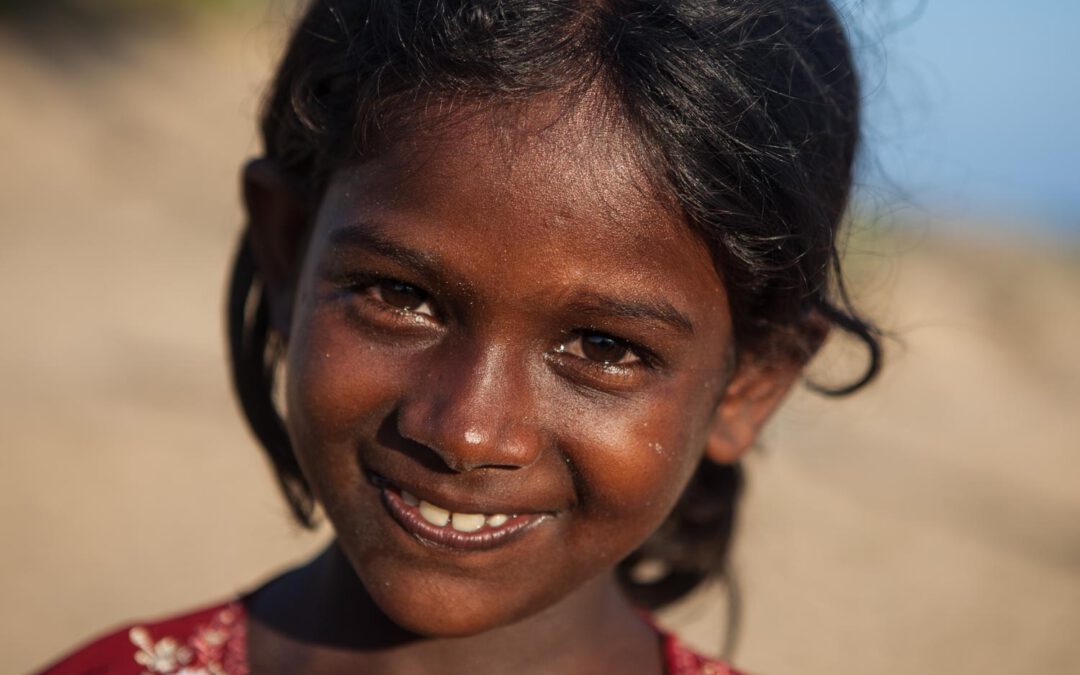
Pearl in the Indian Ocean
Sri Lanka photo gallery
< 1 Min.Sri Lanka: a small, extremely diverse country with the size of Bavaria. The tropical island delights with paradisiacal beaches, mountains up to 2,500 metres high, historical sanctuaries and an exuberant flora and fauna. I spent 5 months there with my family.
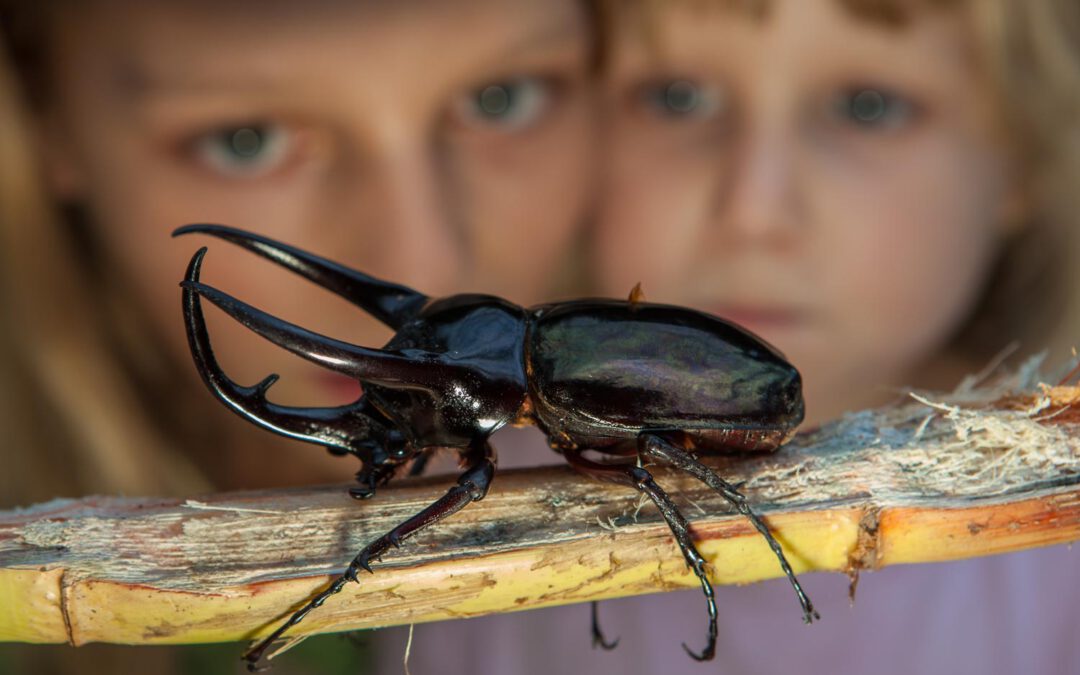
Publication in the Globetrotter-Magazine
Borneo – family adventure in the jungle
21 Min.Together with my wife Annette and our daughters Amelie and Smilla, we are looking for big adventures and discoveries off the beaten track on Borneo. And indeed, for weeks we can hardly stop being amazed.

